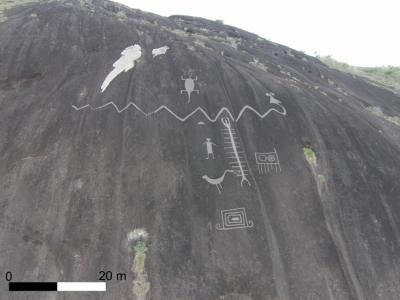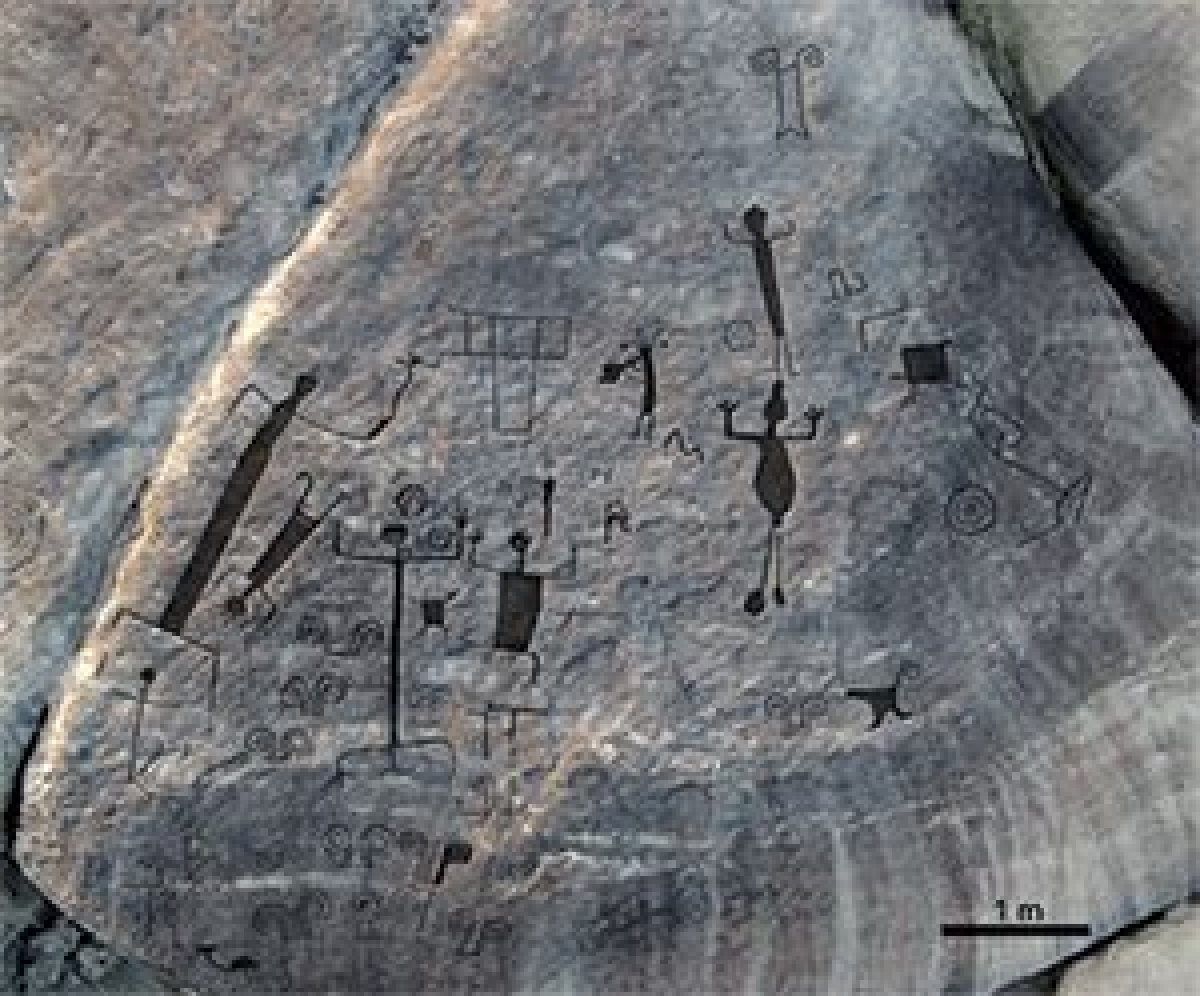
Panels of rock art in Venezuela—including some of the largest known examples in the world, and some never seen before—have been mapped for the first time. The 2,000-year-old engravings, called petroglyphs, are located on a group of islands within the Atures Rapids, in the Amazonas State of Venezuela. The discovery holds clues to better understand ancient cultures in this region.
The research is part of the ongoing Cotúa Island-Orinoco Reflexive Archaeology Project, now in the third of a planned four-year study. The purpose of the project is to examine the "cultural mosaic" around the Atures Rapids, according to Philip Riris, a member of the project and post-doctoral researcher at University College London Institute of Archaeology. The project, one of the first in-depth studies of its kind, is tracing the way pre-Columbian cultures interacted with one another, with a goal of better understanding how those interactions shaped lowland South America's more recent history.
Riris documents the new findings in a new paper in the journal Antiquity. The images show cultural rituals, and also humans and animals, including a horned snake measuring about 100 feet long. On one rock panel, a group of people surrounding what is described as a flute player shows what Riris thinks is a "rite of renewal" ceremony. The time of year when river depth allowed the engravings to be visible would mark the arrival of harvest season.
Unlike painted rock art, which is mainly indicative of burial sites, these engravings pertain to daily life, like how people traveled and how their lives revolved around the Middle Orinoco River and its resources. The similarities to rock art in other sites across lowland South America are helping scientists understand how the Rapids functioned as what Riris described in his study as "an ethnic, linguistic and cultural convergence zone."

The scale of the art is also among its distinguishing features. "The thing that surprised us the most was the sheer size of some of the engravings," Riris told Newsweek by email. "The most obvious one is, of course, the huge snake at the site of Cerro Pintado which has been known for centuries."
In addition to documenting some of the engravings for the first time, the study is noteworthy for how it accomplished those images: by drone. Archaeologists have studied the rock art of the Atures Rapids for years, but have never before been able to image them with such detail; Riris said that even top-of-the-line cameras hadn't been able to sufficiently capture the images before. The dangerous tide has made photographing them difficult, as has their breadth.
"The size precluded us from doing traditional sketches and tracings of the art itself—it's simply too big to avoid gross errors in recording," Riris said. The introduction of drones to photograph the carvings made all the difference. It also helped the project members to understand the scale of what they were looking at.

The Orinoco River, which extends more than 1,500 miles—most of that in Venezuela—has long been used as a network for travel and trade by the region's indigenous inhabitants. The Middle Orinoco, one of the four sections into which the river is divided and the focus of this study, is about 450 miles long.
Riris said that although human and animal figures seemed the most common depictions in the art, the drones also captured a third motif called a "c-scroll," or opposed spirals. Among certain indigenous peoples, that design has been associated withmale fertility. C-scrolls, Riris explained, have been recorded in sites as far away as the Central Amazon and even the Caribbean.
"[H]owever, the fact that they are so widespread does not mean that they carried the same meaning everywhere," Riris said. "Identifying meaning is far more challenging than recording the rock art."
The body of existing archaeological evidence suggests indigenous traders from a number of distant regions interacted at this hub for 2,000 years before the regions was colonized by Europeans. Not much is known about those interactions. Now that these images have finally been captured in a way that does them justice, they could be rich new sources of information to help us understand the region's history.
Uncommon Knowledge
Newsweek is committed to challenging conventional wisdom and finding connections in the search for common ground.
Newsweek is committed to challenging conventional wisdom and finding connections in the search for common ground.
About the writer
Kastalia Medrano is a Manhattan-based journalist whose writing has appeared at outlets like Pacific Standard, VICE, National Geographic, the Paris Review Daily, ... Read more
To read how Newsweek uses AI as a newsroom tool, Click here.








